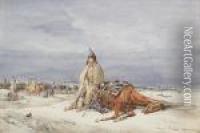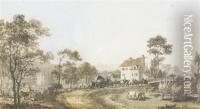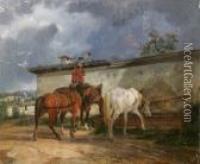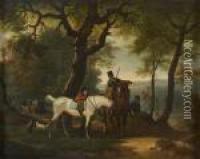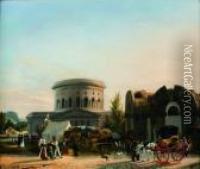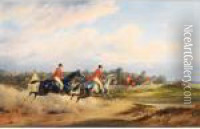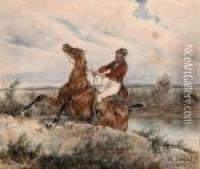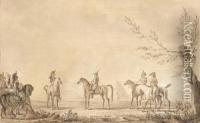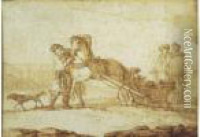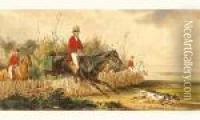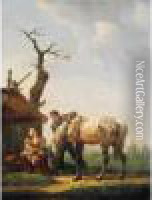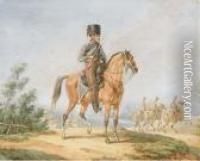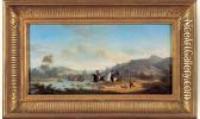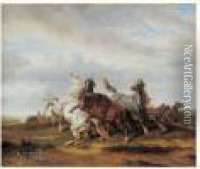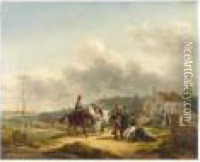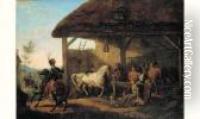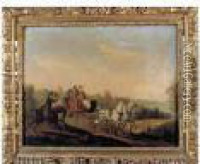Edouard Bernard Swebach Paintings
Édouard Bernard Swebach, also known as Swebach-Desfontaines, was a French painter, illustrator, and engraver born on December 31, 1769, in Paris. He was known for his detailed and dynamic military scenes, genre paintings, and his participation in documenting the Napoleonic wars through his art.
Swebach was the son of Jacques-François-Joseph Swebach, who was also an artist, and he quickly developed a talent for painting. He studied under his father and later worked at the Gobelins Manufactory, which was a prestigious tapestry factory in Paris. His early career was influenced by the events of the French Revolution, and he began to make a name for himself with his depictions of military subjects.
During the Napoleonic era, Swebach's work gained considerable popularity. He closely followed the campaigns of Napoleon Bonaparte and created a series of works that captured the grandeur and drama of the battles and military life. He was not only a painter but also produced a significant number of lithographs and engravings, which helped disseminate his images to a broader audience.
Swebach's style was characterized by his attention to detail, particularly in the representation of uniforms and military equipment, which made his work valuable from both an artistic and a historical perspective. His dynamic compositions and ability to capture the atmosphere of the scenes he depicted added to his reputation.
Apart from military and historical subjects, Swebach also produced genre scenes, landscapes, and works inspired by the everyday life of his time. He exhibited his work at the Paris Salon on several occasions, which was the official art exhibition of the Académie des Beaux-Arts in Paris.
Édouard Bernard Swebach passed away on February 11, 1823, in Paris. His legacy includes a vast body of works that continue to provide insight into the Napoleonic era and the early 19th century. His paintings and prints remain of interest to collectors and historians alike, and his contributions to French art have been acknowledged in numerous exhibitions and art historical texts since his death.
